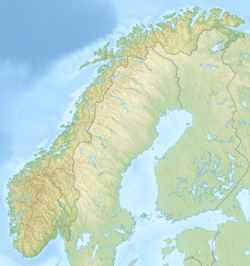Top Qs
Timeline
Chat
Perspective
Heidrun oil field
Oil and gas field in the Norwegian Sea From Wikipedia, the free encyclopedia
Remove ads
The Heidrun oil field is an oil and gas field discovered in 1985 in the Norwegian sector of the Norwegian Sea, named after the goat Heiðrún from Norse mythology.

The field lies 175 kilometres (109 mi) north of Kristiansund. It has produced oil and gas since October 1995. In 2013, it produced 65,000 barrel of oil per day and 760 million cubic meters of natural gas.[1] The crude oil is characterized as being naphthenic with 25.0 API (0.9043 g/cm3), 0.52% sulfur, and a high TAN (Total Acid Number) of 2.90.
The Heidrun field is located on Haltenbanken in the Norwegian Sea at a depth of 350 metres (1,150 ft). The field has been developed with gas and water injection, using a floating concrete tension leg platform, installed over a subsea template with 58 well slots.[2] The northern part of the field is developed with subsea facilities.
Remove ads
Geology
The Cimmerian structure is a southwest-plunging horst block on the southwest flank of the Nordland ridge formed in the Late Jurassic-Early Cretaceous.[2] Production is from Jurassic Fangst Group sandstones with the Upper Jurassic Spekk Formation shales being the petroleum source and Cretaceous shales forming the seal.[2]
References
External links
Wikiwand - on
Seamless Wikipedia browsing. On steroids.
Remove ads


